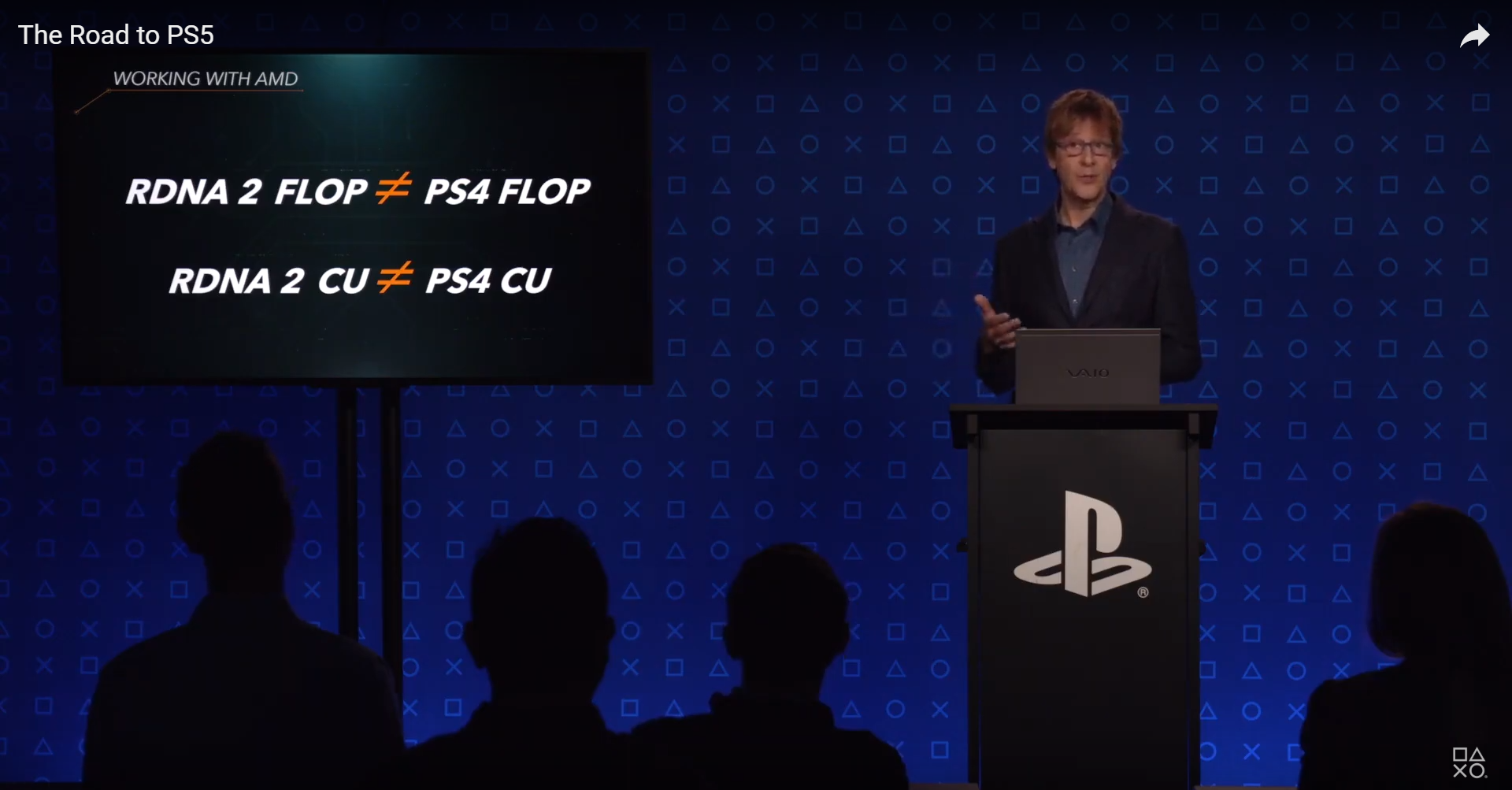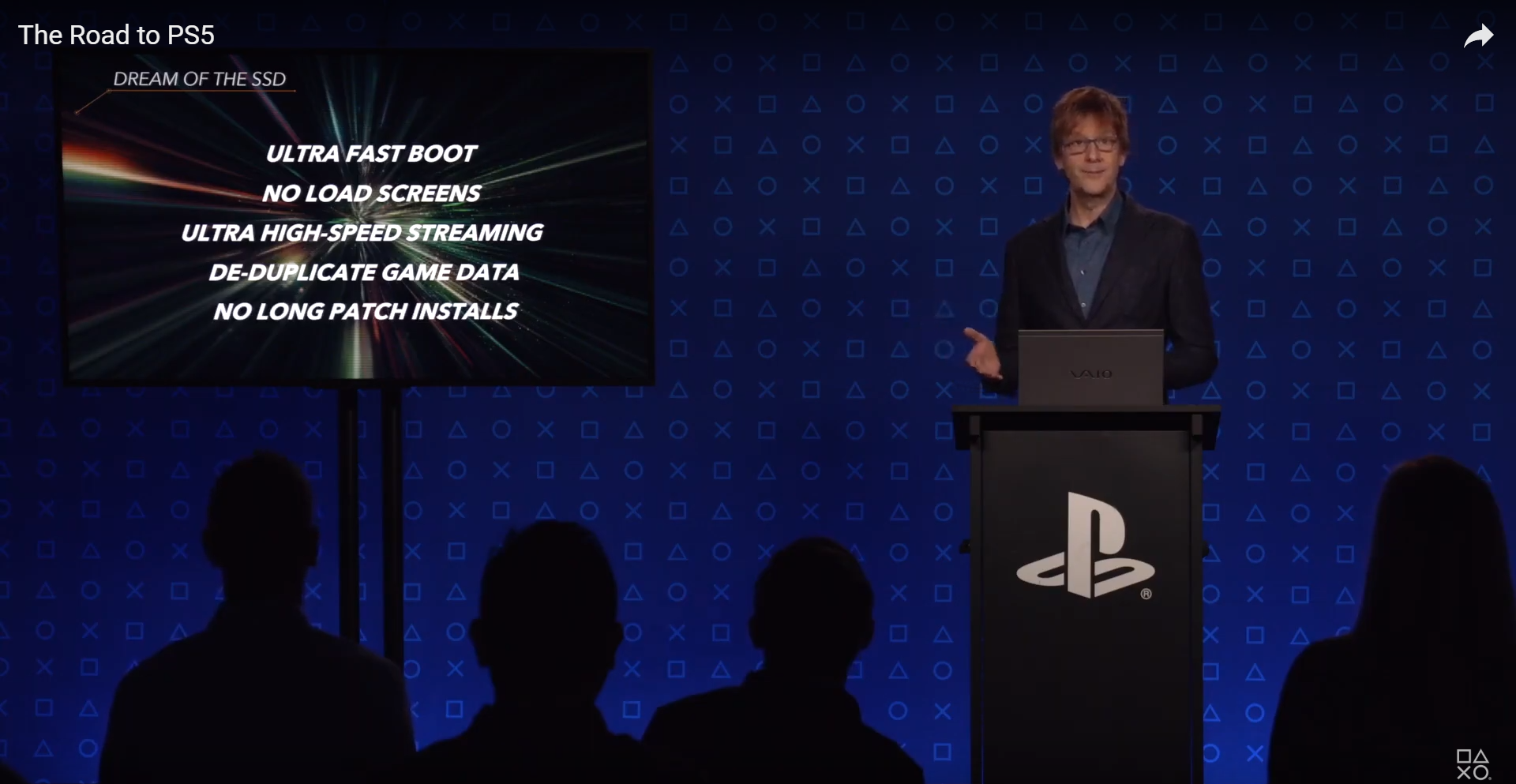A few days ago, Microsoft released detailed specifications of the upcoming Xbox Series X console. It was natural to assume that SONY will follow suit. As a result, PlayStation announced that the lead system architect Mark Cerny would announce the key architectural improvements that the new console will have over the whole family of PlayStation consoles.
Tomorrow at 9am Pacific Time, PS5 lead system architect Mark Cerny will provide a deep dive into PS5’s system architecture, and how it will shape the future of games.
Watch tomorrow at PlayStation Blog: https://t.co/bgP1rXMeC8 pic.twitter.com/BSYX9tOYhE
— PlayStation (@PlayStation) March 17, 2020
The video finished a few moments ago, and we can safely say that PlayStation 5 will definitely be a generational leap over the PlayStation 4. According to Mark Cerny, the following points were the key drivers behind the development of the new console. These points include listening to the developers, finding new dreams, and balancing revolution and evolution.
Most of us are more interested in the raw numbers, so let me present the specifications on paper.
- 8 multithreaded custom Zen 2 cores clocked at 3.5GHz with variable frequency
- RDNA 2 based GPU with 36 CUs clocked at 2.23GHz (10.28TFLOPS) again with variable frequency
- 16GB of GDDR6 RAM with a 256-bit bus size
- Custom 825GB PCIe 4.0 based SSD accompanied by custom flash controllers
- Support for M.2 based SSDs
- Support for USB HDD for the PS4 titles (can not use it for PS5 titles)
- 4k UHD Blu-ray Drive
PlayStation 5 SoC
If we take a look at the specifications above, we can see that SONY’s PlayStation 5 lacks on many fronts when compared to the Xbox Series X. It has a slower processor, GPU has a lower number of shader cores, RAM has a smaller bus.
A naive person would say that the PlayStation 5 console will not be as powerful as the mighty Xbox Series X, but SONY is employing a deeper and more meaningful approach. As Mark Cerny mentioned during his visit to many developers, he had time to dive into many problems that the developers have to face while making games for a low-powered console as opposed to gaming PCs. The specifications show that rather than going for an all over the top approach (which will increase costs), SONY went with a smart tweaking approach.

CPU
Talking about the SoC, the processor is based on the Zen 2 architecture, which means the processor will be based on the enhanced 7nm fabrication process, which will be a lot faster than the Jaguar processor in the PS4. Mark Cerny did establish that there will be no comparisons with the PS4 hardware since it will be the same as “comparing apples with oranges,” so we do not have the exact performance multiplier. A reasonable guess would be the same as the processor in Xbox Series X’s CPU.
The most important thing to note about the CPU is that it will support variable frequencies depending upon the load. Instead of opting for a constant frequency regime like Xbox, SONY went with variable frequency. Cerny said that using it will improve the dynamic cooling system in place.
GPU
The same is the case with the GPU. PlayStation 5 will have a custom GPU based on the RDNA 2 architecture. While developing for the GPU, Cerny made sure that it was more of a collaborative approach rather than a secretive approach employed before. He said, “If we have a similar GPU available for the PC market, then it will be a success for their combined efforts.” He added that the main goals during the combined effort were threefold.
It included restructuring the architecture to optimize the data handling in the GPU core, performance optimizations, and more features. The feature component was the most malleable in the case of PS5 since SONY can add more features to the core architecture itself. Before we start complaining that PS5 will have the same number of CUs as the PS4 Pro, it should be clear that an RDNA 2 CU has 62% more transistors than a GCN 2.0 CU. So, we can not compare these based on the number of shader cores.

The performance of a GPU can be increased by either increasing the die size (adding more shaders) or by increasing the frequency. Increasing frequency is mostly used to get the last frame boost on the development stage. Cerny said, “I like frequency route since faster is better. if we increase the clock speed by 33%, it will mean rasterization has increased by 33%, vector calculation has been increased by 33%, but the downside in memory cycle has been decreased by 33%.” Manipulating the clock speeds is a cost-saving solution that can work well with PS5’s dynamic cooling solution. Ironically, processing a scene with dense geometry requires less graphical power at higher frequencies. So, coherence in the whole system is the name of the game in the case of PlayStation 5.
Backwards compatibility
The main idea behind the fact that they did not go for the new architecture was backwards compatibility. SONY knows that it could have had more PS4 sales if it had been a backwards compatible console just like the Xbox One. So, backwards compatibility was one of the key aspects behind the GPU.
There are two ways to incorporate backwards compatibility in a console. One is using the same chip inside the console that can emulate the previous console; it was used in PS3. The other is to use logic processing, which means the current architecture uses logic processing to play the games developed for the previous architecture. Xbox Series X and PS5 will use this technique as it has no additional cost, and it also allows better graphics for the older games.
Ray Tracing and Geometry engine
Backwards compatibility was one of the new features of the GPU. It has many new features, such as the proprietory geometry engine, which will handle the polygons and vertices (technical terms for the graphics) on display. If the scene is more complicated, it will use its primitive shaders to synthesize geometry on the fly through rasterization.
Lastly, the GPU will have hardware-accelerated Ray Tracing support. It will have an intersection engine inside the shader cores which works the acceleration engine the identify light rays. The most important part here is the fact that shaders can work on rasterization while the acceleration engine works on the beams, and hence parallelism is reached, which means ray tracing will have a less toll on the overall graphics.

Cerny said, “We will see different implementations of ray tracing in different games. As far as our testings are concerned, a certain game achieved reflection level ray tracing (tracking 1/2 billion rays) with minimal performance loss on the PS5 hardware”.
Custom SSD
The essential upgrade, according to the lead system architect of PlayStation 5, is going to be the custom SSD. Based on the new PCIe 4.0 interface, the SSD will have a capacity of 825GB, and the bandwidth is going to be 5.50 GB/s. The transfer rate claimed by SONY is more than any NVMe SSD present in the market. Since most of the developers wanted a fast storage solution, SONY had to come up with a custom memory controller so that there are virtually no loading times in the games.
Loading times are one of the biggest hassles in modern games. The main problem behind this, according to Cerny, is lower bandwidth and data duplication. Lower bandwidth problem can be solved easily by swapping an SSD, but data duplication can only be catered in the development stage. To help with the situation, the I/O controller in the custom memory controller is configured with the Dedicated DMA controller (performance equal to a Zen 2 core), Two I/O coprocessors (with performance equal to 9 Zen 2 cores), On-chip RAM and a coherence engine. There is a Kraken decompression engine in place too.

Kraken compression is the industry standard now. SONY decided to stay with Zlib compression, but most developers requested Kraken compression since it allows more data to be compressed into smaller sizes with no loss. It will not only allow bigger games on a single 4k Blue-ray disc (RDR2 comes with two discs, The Last of Us 2 will reportedly ship with two discs too).

The goal for the SSD is to have games take less space, and there are no loading times. The console supports NVMe SSDs, too, but Cerny said that they would have to test whether the SSDs are compatible with the memory controller in place first.
ALSO READ: Microsoft released the detailed specification of Xbox series X
3D Audio
The other key feature for the next generation was 3D Audio for everyone. It will be the industry-leading technology that will provide VR like experience on-screen spaced games. The audio system has been taken as granted up until now, but PS5 will treat the audio as part of the system, not as a peripheral. HRFT is used to map how soundwaves enter our ears and change their phases and wavelengths to give us a locality clue.

HRFT of hundreds of individuals is used to create a sound map that will be implemented in the system. Currently, the focus is on improving the technology for headphones since most people play games with their headphones. The support for TV speakers and the home surround sound system will be added later.
Cerny said that they are also looking towards other solutions to get HRFT of the PS5 players. They could ask for the pictures of ears, or videos or head and ear, or they could even develop a game that will let you play around the audio, which will determine the player specific HRFT.


